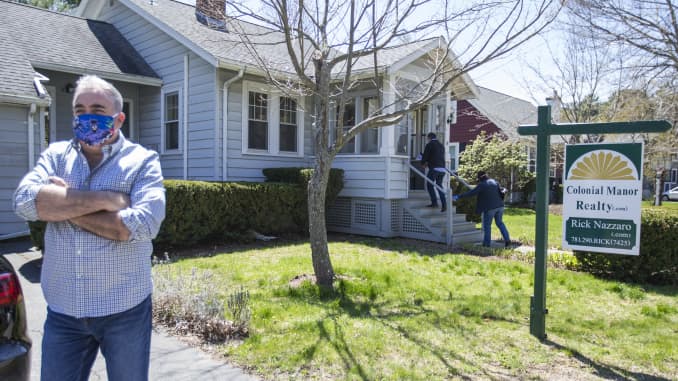After reaching almost 15-year high last month, existing home sales, as reported by the National Association of Realtors (NAR), declined for the first time in six months amid inventory shortage and surging prices.
Total existing home sales, including single-family homes, townhomes, condominiums and co-ops, fell 2.5% to a seasonally adjusted annual rate of 6.69 million in November. On a year-over-year basis, sales were still 25.8% higher than a year ago.
The first-time buyer share stayed at 32% in November, same as last month and a year ago. However, price gains threaten this share in the future. The November inventory level fell to record-low 1.28 million units from 1.42 million units in October and is down from 1.64 million units a year ago.
At the current sales rate, the November unsold inventory represents an all-time low 2.3-month supply, down from 2.5-month in October and 3.7-month a year ago. This low level supply of resale homes is good news for home construction.

Homes stayed on the market for an average of just 21 days in November, an all-time low, seasonally even with last month and down from 38 days a year ago. In November, 73% of homes sold were on the market for less than a month.
The November all-cash sales share was 20% of transactions, up from 19% last month but unchanged from a year ago.
Tight supply continues to push up home prices. The November median sales price of all existing homes was $310,800, up 14.6% from a year ago, representing the 105th consecutive month of year-over-year increases. The median existing condominium/co-op price of $271,400 in November was up 9.5% from a year ago.
Regionally, three of four regions saw a decline in existing home sales in November. Sales in the Northeast, Midwest and South fell 2.2%, 2.5% and 3.8% respectively from last month, while sales in the West remained unchanged. On a year-over-year basis, sales still grew by double-digit in all four regions, ranging from 24.2% in the Midwest to 27.3% in the West.

Though sales took a marginal step back in November, existing home sales have outperformed 2019 levels and housing demand is expected to remain strong due to low mortgage rates and remote-work flexibilities. However, the imbalance between housing supply and demand could hamper future sales by driving up home prices and restraining affordability.
read more…
eyeonhousing.org









